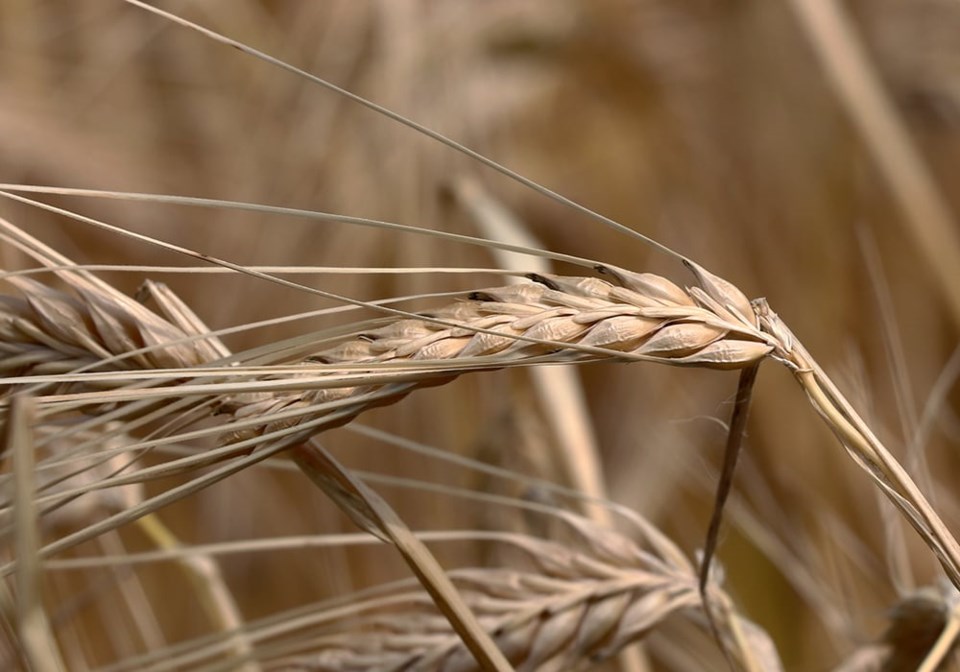SASKATOON — Canadian barley growers might have a window of opportunity to regain some lost market share in China, says an analyst.
The U.S. Department of Agriculture is forecasting that Australia will export six million tonnes of the cereal crop in 2024-25. That is down from seven million tonnes last year and more than eight million tonnes a few years ago.
Australia’s loss could be Canada’s gain in the world’s largest barley market.
“Canada would have a clearer path into China,” said Neil Townsend, chief analyst with GrainFox.
Australia amassed a big stockpile of barley after China imposed anti-dumping duties on the crop in May 2020. Favourable weather and yields also contributed to the surplus, despite farmers cutting back on acres after those duties were imposed.
But the supply situation rapidly changed after China’s duties were removed in August 2023. That coincided with a drop in production in 2023-24 due to adverse El Nino weather effects. Stocks began to dwindle.
“With low carry-in stocks for 2024-25, much of Australia’s production will be needed for its domestic market,” the USDA stated in its recent .
“Consequently, exports are forecast at a five-year low.”
Will Canada have the supplies to take advantage of that situation? Agriculture Canada estimates Canadian farmers reduced barley plantings by 2.6 per cent this year.
It is forecasting 9.5 million tonnes of production and 2.75 million tonnes of exports.
Townsend thinks that sounds about right.
“We still see barley kind of struggling to regain where it once was,” he said.
“We saw a big flow of acreage into oats, so that’s taking away from barley a bit, and wheat had some really good price dynamics when (farmers) were making their (seeding) decisions.”
Canada’s crop is off to a good start due to ample early-season rainfall in key growing areas, although development might be delayed due to lack of heat.
“I’d say there is full potential right now,” said Townsend. “We just don’t have any broad worries about the crop.”
July will be the telltale month for yields.
Townsend thinks Canada can easily export 2.75 million tonnes of barley, and maybe more if it regains some lost market share in China.
But it will face stiff competition in that market. The USDA believes the European Union will be the biggest beneficiary of Australia’s reduced export program, considering it has supplied one-third of China’s needs in the past.
“The European Union has the potential to backfill the loss in the barley market left by Australia,” it stated in the report.
The USDA is forecasting 53.8 million tonnes of EU production, a four-year high. Exports are forecast at 7.3 million tonnes, a 12 per cent year-over-year increase.
That would make the EU the world’s largest barley exporter, followed by Australia and Russia.
Canada is expected to rank a distant fifth, with a 2.4 million tonne export program, according to the USDA.
Canada shipped 1.45 million tonnes of barley to China in the first nine months of the 2023-24 campaign, a 36 per cent drop from the previous year due in part to the resurgence of Australia.
Ukraine is another major exporter to contend with, but farmers in that country are struggling to produce and export their crops amid the ongoing conflict with Russia.
The Ukrainian Grain Association is forecasting 4.6 million tonnes of production, down from 5.8 million tonnes last
year. It is estimating two million tonnes of exports, which would be below last year’s 2.5 million tonnes.
Townsend said the other factor to consider is how much Canadian barley will be consumed domestically by the cattle industry. The big question on that front is how much U.S. corn will flood across the border.
The market seems to think the U.S. will lose 500,000 to one million acres of corn when the USDA updates its acreage estimates on June 28. But the crop appears to be in good shape with three-quarters rated good to excellent as of June 16.
“The corn supply in the U.S. looks like it’s pretty solid,” Townsend said.
If growers south of the border harvest a big corn crop, they will look to ship some of it to Alberta’s feedlot alley.
“One thing that works for domestic barley and against U.S. corn is that the Canadian dollar has just totally failed to have any liftoff,” said Townsend.
Contact [email protected]




